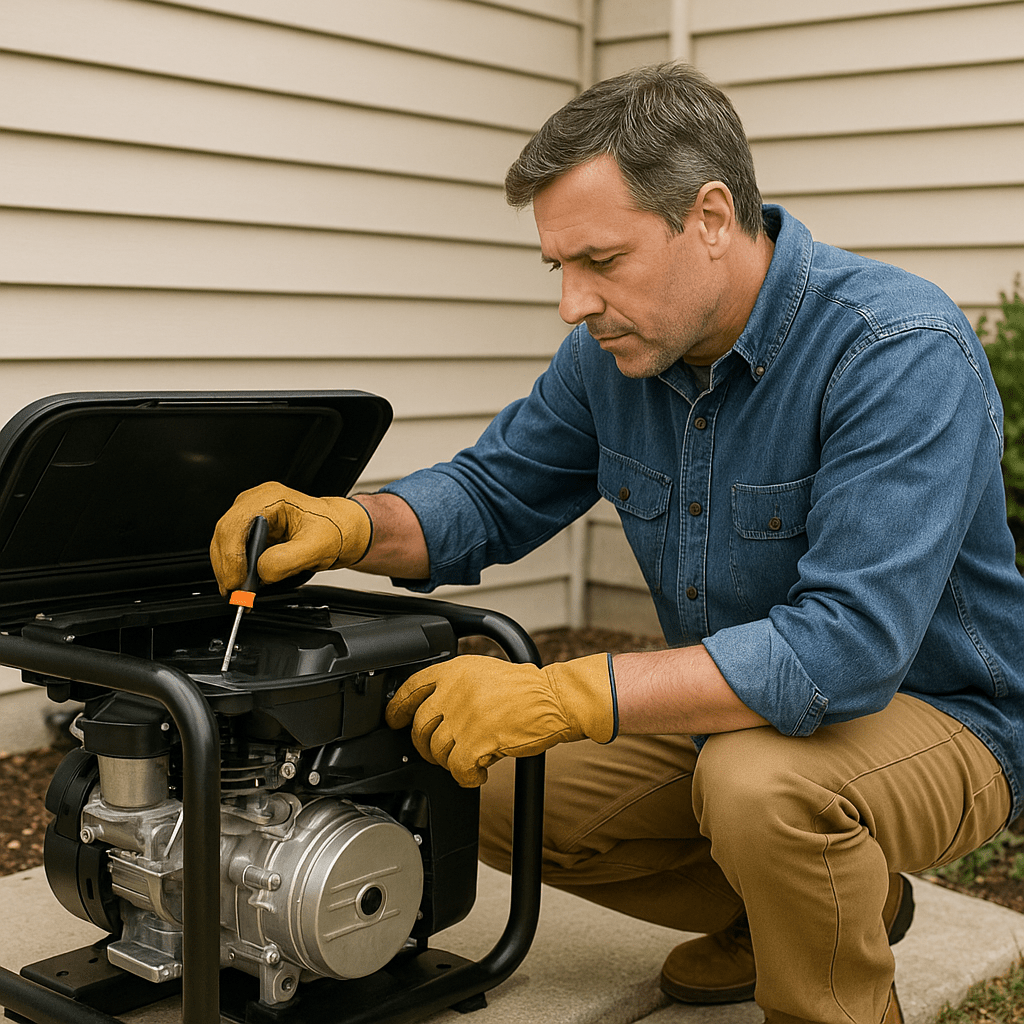Generator Maintenance Guide
 A generator maintenance guide is essential to ensure your backup power supply works when you need it most. Whether you’re preparing for a blackout or maintaining your generator year-round, this guide covers every step to keep your equipment running efficiently and safely.
A generator maintenance guide is essential to ensure your backup power supply works when you need it most. Whether you’re preparing for a blackout or maintaining your generator year-round, this guide covers every step to keep your equipment running efficiently and safely.
Why Generator Maintenance Matters
Regular generator upkeep prevents unexpected breakdowns and extends the lifespan of your unit. Ignoring basic maintenance tasks can lead to fuel system issues, battery failure, or worse—complete system failure during an emergency.
🔧 Generator Maintenance Checklist
Maintaining your generator doesn’t have to be overwhelming. Here’s a practical checklist every homeowner can follow:
Weekly or Monthly Tasks
-
Check oil level and top off if needed
-
Inspect for leaks, loose wires, or worn belts
-
Run the generator for 10–15 minutes (exercise run)
-
Listen for strange noises during operation
-
Check display panel for error codes or warnings
Every 6 Months or After Extended Use
-
Change the oil and oil filter
-
Clean or replace the air filter
-
Inspect and clean the spark plugs
-
Flush stale fuel and refill with fresh stabilized fuel
-
Test the battery and clean the terminals
Annually
-
Schedule a professional inspection
-
Replace the fuel filter
-
Check voltage output under load
-
Perform load bank testing if possible
Tools and Supplies for Generator Maintenance
Stock up on these essential supplies to perform proper maintenance:
-
Oil (type specified by manufacturer)
-
Oil filter
-
Air filter
-
Spark plugs
-
Fuel stabilizer
-
Clean rags and gloves
-
Socket wrench set
-
Multimeter (for testing voltage)
Generator Maintenance Guide Safety Tips
Before starting any maintenance task, safety must come first.
Generator Maintenance Guide for Homeowners – Key Safety Rules
-
Always turn off and cool down the generator before working on it.
-
Never perform maintenance in an enclosed space—ensure proper ventilation.
-
Use manufacturer-recommended parts and fluids only.
-
Keep children and pets away during maintenance procedures.
-
Use PPE (personal protective equipment) like gloves and safety glasses.
- OSHA – Using portable generators safely fact sheet
Troubleshooting Common Generator Problems
Even with good maintenance, issues can arise. Here’s how to solve the most common ones:
| Issue | Possible Cause | Solution |
|---|---|---|
| Generator won’t start | Dead battery or old fuel | Recharge/replace battery, drain fuel |
| Surging power output | Dirty air filter or spark plug | Clean/replace filter and plug |
| Shuts down unexpectedly | Overload or oil sensor alert | Reduce load, check oil level |
| Unusual noise or vibration | Loose bolts or damaged parts | Tighten bolts, inspect for worn parts |
Storage and Long-Term Care
If you’re not using your generator regularly:
-
Drain the fuel or use a stabilizer
-
Store in a dry, dust-free location
-
Disconnect the battery terminals
-
Cover the unit to prevent dust and debris buildup
Final Thoughts on Generator Maintenance
Every homeowner should follow a generator maintenance guide to protect their investment and ensure reliable power. Consistent checks, timely part replacements, and safety practices can make the difference between light and dark during a power outage.